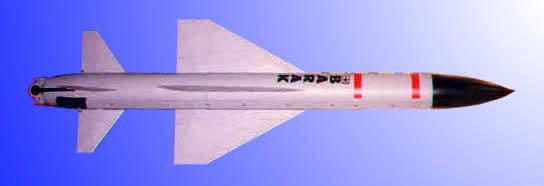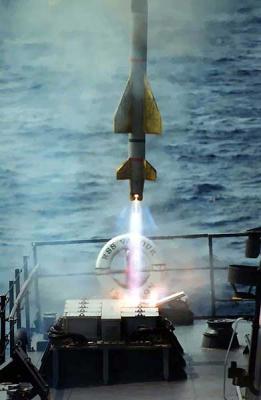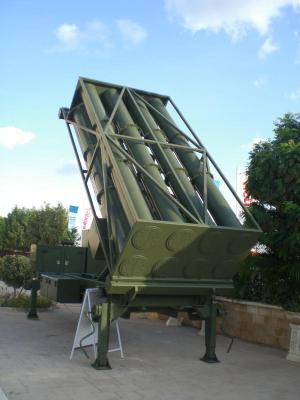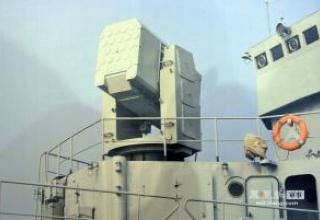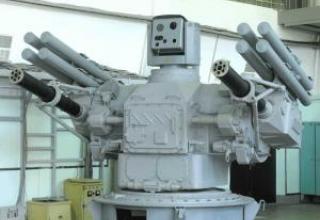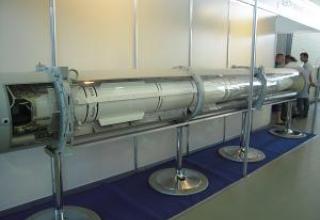Barak is an anti-aircraft missile of vertical launch, which is part of the PDM1 anti-aircraft missile system. It was developed jointly by MBT, Elta and Rafael (Israel).
The system is designed to protect individual ships from aircraft and anti-ship missiles flying at extremely low altitudes, and can also be used to strike coastal and surface targets, including hovercraft.
It was adopted by the Israeli Navy in 1987. It is currently in service with the Navy of India, Singapore and several other countries.
Composition:
The PDM1 complex includes:
- Pulse Doppler radar detection EL/M-2228S AMDR (frequency range 2-6 GHz), using modern signal processing techniques for simultaneous search at a high level of local interference up to 20 small low-volume targets with speeds of 0.3-3.0 M (in tests, the radar captured after detection small targets with EPR about 0.1m2 at a range of more than 16 km);
- radar EL/M-2221 STGR for tracking and illumination of targets;
- two blocks of vertical launch launchers - VLU, each of which consists of eight transport and launch containers with Barak missiles;
- control unit for launchers;
- a missile launch control unit.
The application of the vertical start PU allows to place a large number of SSDs on small ships. The reaction time of PDM1 SAMs is about 6 s, of which 0.6 s is required to launch and turn the missile on target. The fire is usually controlled from a ship's information post, but the system can operate independently if necessary.
Included in the complex Barak anti-aircraft missile at normal aerodynamic scheme has a distinctive feature: in the tail part of it is a block of gas rudders, which operate in conjunction with the aerodynamic rudders after the rocket from the vertical PU. The missile is equipped with a semi-active radar HSP and a shrapnel-phase BC with an adaptive non-contact fuse, which has high sensitivity in all directions, except for the direction of the water surface. This reduces the probability of false triggering of the BC when shooting at a low-flying target. The combat unit retains its effectiveness if the value of the miss when launching on an anti-ship missile does not exceed 3m, and on aircraft - 7m.
After launch, the missile leaves the container and performs a pitch manoeuvre to move to the target intercept trajectory, after which the gas rudder block is reset. The vertical start provides possibility of the organization of circular defence of the ship in a range of angles of a place of the purpose from -25 to +85°, thus the rocket can make maneuvers with overloads to 6 units. When intercepting a low-flying target, the SAM approaching the target on a hinged (parabolic) trajectory.
In 2003 it was decided that India would purchase a new modification of Barak missiles for its Navy from Israel. The features of the SAMs are their short reaction time - up to 6 seconds, vertical missile launch with a quick turn towards the target, missile guidance in the beam, the possibility of using the missile in almost any weather conditions, the range from 0.5 to 10 km, light weight and modular design of the complex.
The missile weighs 98 kg, can reach speeds of up to 580 m/s and perform maneuvers with high overloads. The missile has a mass of 22 kg with hitting elements of high-strength tungsten, which allows you to use it to fight both aircraft and helicopters, and with various types of high-precision weapons.
The Barak SAM rocket has a cross-shaped folding plumage, so it is placed in the launch container with the dimensions of 2.45 x 0.25 x 0.3 m. The weight of the launcher with eight missiles is 1.5 t, which is several times less than the weight of similar launchers for ship missiles "Sea Sparrow" or "Sea Wolf".
India's first Barak SAM system was installed on an Indian aircraft carrier, the Viraat. It was noted in a number of sources that in the near future Barak will be installed on some more Indian ships, where it will replace the "Wave" SAM system purchased several decades ago in the USSR.
On 11 November 2009, it was reported, according to The Economic Times, that Israel had reached an agreement to supply an advanced air defence system (Air Defense) Barak-8 to India. The contract, according to which the first deliveries of the air defence system should begin in 2017, is worth $1.1 billion.
Until 2011, India should have received a ship's Barak-2 air defense system with a range of up to 70 kilometers.
The Barak-8 air defence system is a ground-based system designed to detect and engage a wide range of air threats simultaneously, including aircraft, cruise missiles and surface-to-surface missiles in a 360-degree sector at short and medium range at any time of day and in harsh weather conditions.
The Barak-8 complex includes:
- Combat Control, Command, Control, Communication and Intelligence Center (BMC4I);
- interceptor missiles launchers;
- Ground-based multifunction detection, tracking and guidance radar (LB-MF-STAR).
The BMC4I Center provides the ability to perform autonomous operations of a separate fire unit and coordination of all available resources on the scale of the operational connection.
The Barak-8 interceptor missile (see photo) was developed in cooperation with Rafael and is a 4.5 m long two-stage solid fuel SAM equipped with an active homing system. The missile is launched using a vertical launcher and is capable of intercepting targets at a range of 70-80 km in difficult weather conditions at any time of day or night. After launch, the missile receives target designation from the guidance radar.
The marine version of the SAM system uses the EL/M-2248 multi-purpose surveillance, tracking and pointing radar (MF-STAR) by Elta Systems, consisting of four fixed antenna arrays. The ground version of LB-MF-STAR will be equipped with a similar radar with one electronically controlled rotating S-band antenna and will provide target detection and guidance for interceptor missiles.
Characteristics:
| Range, km | 0.5-10 |
| Target intercept altitude, km | 0.004-5 |
| Rocket velocity, M. | 1.6 |
| The length of the rocket, mm | 2500 |
| The diameter of the rocket body, mm | 250 |
| Start weight , kg | 98.0 |
| Weight of combat unit, kg | 22 |
Testing:
The main elements of the ATACMS system were tested mainly at the White-Sands test site. The system received its baptism of fire in the desert storm. The ATACMS was used to destroy Iraqi army air defense batteries and communications hubs. During the operation, about 200 trucks and equipment were destroyed. The combat effectiveness of these systems has been quite high.
Sources:
- АРМС-ТАСС.
- Б.И.Родионов, Н.Н.Новичков "Крылатые ракеты в морском бою", -М.: Военное издательство, 1987.-214с.
- http://www.automan.kz/127545-indija-kupila-izrailskie-kompleksy-pvo-barak-8-na.html
- http://www.guraran.ru/index.php?mode=10&submode=30&razdel=4&id=4757
